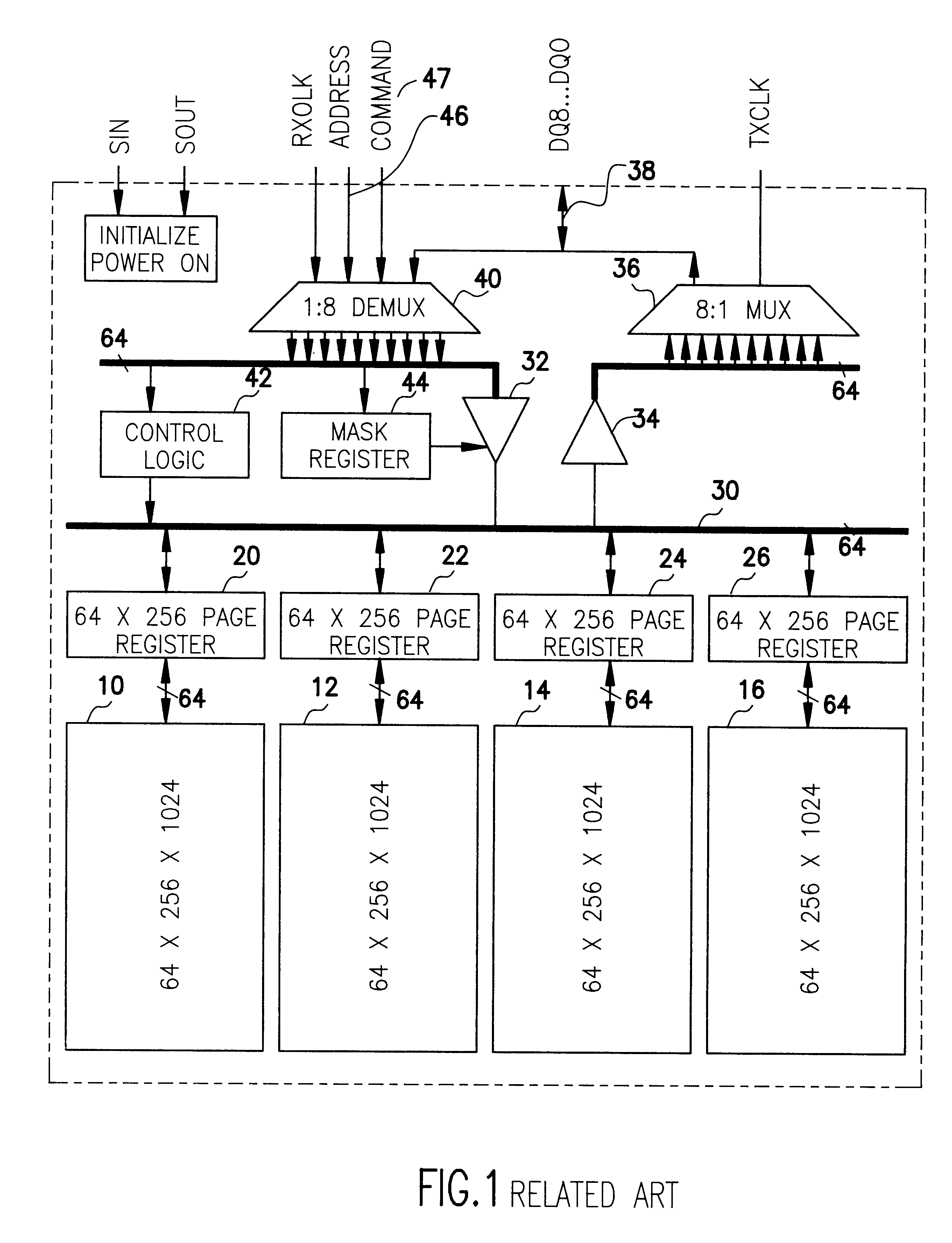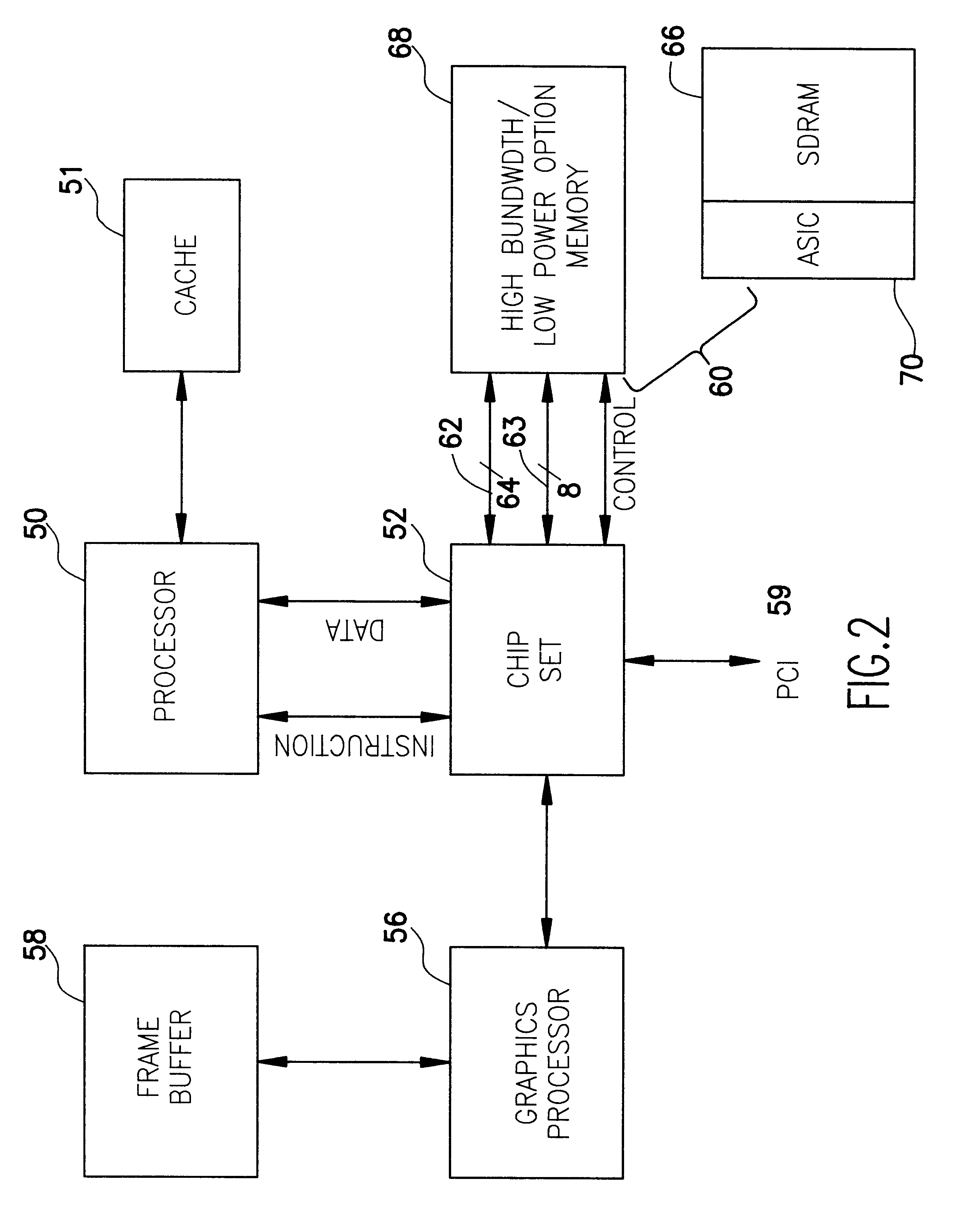High bandwidth DRAM with low operating power modes
a high-bandwidth, dynamic random access memory technology, applied in the direction of memory adressing/allocation/relocation, instruments, sustainable buildings, etc., can solve the problems of memory being a system bottleneck, dram performance is a well-known limitation of computer system performance, and far short of processor performan
- Summary
- Abstract
- Description
- Claims
- Application Information
AI Technical Summary
Benefits of technology
Problems solved by technology
Method used
Image
Examples
Embodiment Construction
Referring now to the drawings, FIG. 2 shows a processor 50 and associated cache memory 51 connected to a chip set 52. The chip set is connected to a graphics processor 56 and a frame buffer 58 as well as a peripheral component interconnection bus (PCI) 59. The processor 50 is additionally connected to a dynamic random access memory (DRAM) 60. According to the invention, the DRAM 60 is selectively connected to the processor 50 via the chip set 52 by either a high-speed bus 63 or a slower, less power consuming bus 62. The chip set may be, for example, the INTEL PENTIUM 430, 440, or 450 series chipsets. The memory 60 may be, for example, a synchronous DRAM (SDRAM) 66 and application specific integrated circuit (ASIC) 70, as shown in FIG. 3 or a high-bandwidth DRAM 68 as shown in more detail in FIG. 4. In the case of an SDRAM 66 the application specific integrated circuit (ASIC) 70 is required to interface between the high speed bus 63 and the slower bus 62. In the case of a high-bandwi...
PUM
 Login to View More
Login to View More Abstract
Description
Claims
Application Information
 Login to View More
Login to View More - R&D
- Intellectual Property
- Life Sciences
- Materials
- Tech Scout
- Unparalleled Data Quality
- Higher Quality Content
- 60% Fewer Hallucinations
Browse by: Latest US Patents, China's latest patents, Technical Efficacy Thesaurus, Application Domain, Technology Topic, Popular Technical Reports.
© 2025 PatSnap. All rights reserved.Legal|Privacy policy|Modern Slavery Act Transparency Statement|Sitemap|About US| Contact US: help@patsnap.com



